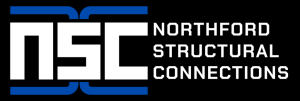Key Features of DTFC Flexible Connections Explained
Understanding DTFC Flexible Connections
In a world where efficiency and adaptability are paramount, DTFC Flexible Connections stand out as a crucial innovation. These connections are specifically designed for variable applications in various industries, such as construction, infrastructure, and manufacturing. What sets DTFC apart is its focus on flexibility, allowing for enhanced durability and sustainability in fluid or electrical systems.
What Are Flexible Connections?
Flexible connections are components that are engineered to accommodate movements without compromising the integrity of the system. They can absorb vibrations, thermal expansions, and contractions in any setup. The components are typically used in piping, HVAC systems, electrical installations, and other critical infrastructures. DTFC flexible connections are particularly notable for their specialized design that contributes to various operational advantages.
Key Features of DTFC Flexible Connections
1. Enhanced Durability
Durability is a primary feature of DTFC flexible connections. Built from high-quality materials, these components are resistant to wear and tear. Their design minimizes the risk of failure, ensuring a long operational life. This reliability is vital for reducing downtime and maintenance costs in industrial settings.
2. Vibration Absorption
DTFC flexible connections are engineered to absorb vibrations effectively. This capability not only protects the system itself but also mitigates potential damage to surrounding components. Vibration absorption is essential in mechanical systems where movement can lead to progressive wear or failure.
3. Thermal Expansion Management
Another key feature is the ability to manage thermal expansions and contractions. DTFC flexible connections allow for natural movement due to temperature changes, thereby minimizing stress on joints and connections. This ability plays a critical role in maintaining integrity in systems subjected to varying heat conditions.
4. Versatile Applications
DTFC flexible connections are adaptable to a wide range of applications. Whether in water supply systems, air conditioning units, or electrical installations, these connections serve multiple industries. Their versatility makes them an essential choice for engineers and project managers seeking reliable performance across diverse environments.
5. Easy Installation
Ease of installation is another pivotal feature of DTFC flexible connections. Engineered for quick and straightforward installation, these components help reduce both time and labor costs. Faster installation leads to increased project efficiency, a critical factor in today’s competitive market.
6. Cost-Effectiveness
Investing in DTFC flexible connections can be a cost-effective choice. While initial costs may seem higher than standard connections, the long-term savings associated with reduced maintenance, lower downtime, and improved system performance are substantial. This feature makes DTFC connections a financially savvy option.
7. Environmentally Friendly
Environmental sustainability is increasingly becoming a priority across industries. DTFC flexible connections are designed with eco-friendly materials, which contribute to reduced environmental impact. These components can help organizations meet regulatory standards and fulfill corporate social responsibility goals.
Conclusion
DTFC flexible connections embody a multitude of design and functional features that enhance performance in various applications. Their durability, vibration absorption, and thermal expansion management capabilities make them indispensable in contemporary industrial systems. By choosing DTFC flexible connections, organizations can ensure reliability and efficiency, ultimately boosting their operational success.







